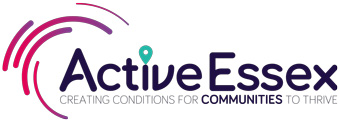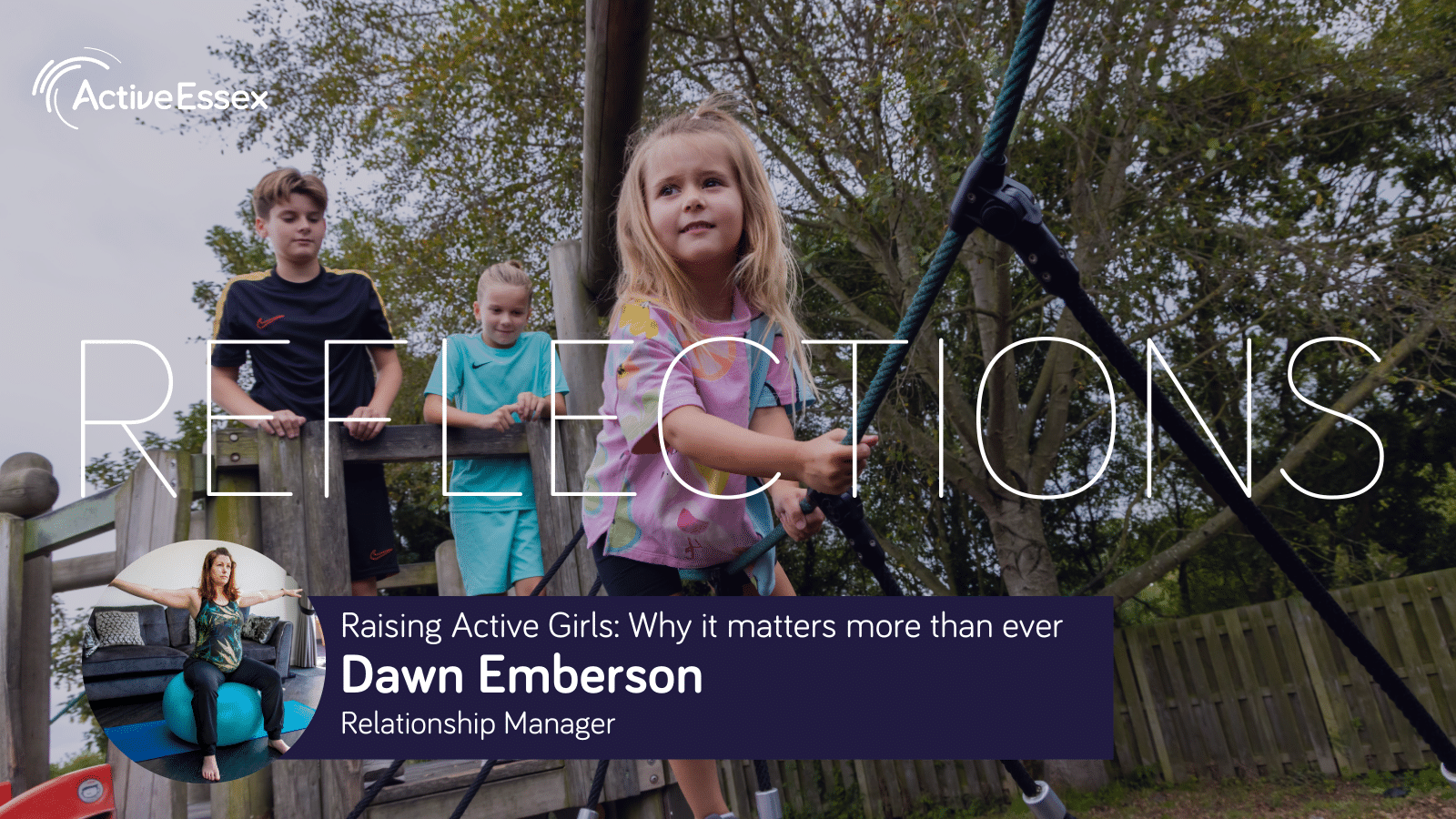This piece is the second in our team reflections blog series, exploring the experiences of women and girls in sport. My colleagues have shared powerful reflections about bridging gaps and the journeys of women coaches in the sector, as well as Jason our director also sharing the successes of our local elite female athletes on the national and international stage. As Relationship Manager for Active Essex, my focus is on children and young people (CYP), and that’s where I’d like to begin.
The lives of CYP today are arguably more complex than ever. They’ve endured a global pandemic, face rising obesity rates, and grapple with increasingly poor mental health. Add being female into the mix, and the challenges deepen even further.
The latest Active Lives Children & Young People Survey (2023–24) revealed that just 45% of girls meet the recommended 60 minutes of physical activity per day. Nationally, boys are 6.8% more active than girls, a gap that has remained stubbornly consistent over the years. This disparity persists into adulthood, with men consistently more active than women across all age groups.
These figures fuel my passion for our work at Active Essex. As a mother to two girls under five, I’m personally invested in shifting these statistics. I want my daughters and their peers to grow up loving movement and feeling empowered through it.
Understanding the lived experiences of CYP is essential to addressing these inequalities. At Active Essex, we’re committed to ensuring that Youth Voice, especially from disadvantaged groups, underpins our work and not just through surveys and feedback, but through local leadership, collaboration, and co-design. This ethos is reflected in initiatives like the School Games, Invincible Games, and our Move With Us ambassador programmes, all platforms which give young people the chance to lead, inspire, and shape the future of sport and physical activity in Essex.
Research shows that positive attitudes toward activity in early life are strongly linked to a more active adulthood. So how do we get it right for girls?
For me, it started within my family setting. I was surrounded by grandparents, parents, and siblings who loved sport and movement. I had access to opportunities and more crucially female role models, who encouraged me to explore different activities. School and further education nurtured my interests, helped me develop skills, and gave me a sense of belonging. But above all, it was fun!
Now, as a parent, I try to recreate that joy. For us, it means making movement a norm, whether it’s walking or wheeling instead of driving (which, let’s be honest, is often easier than wrestling toddlers into car seats), or embracing active play outdoors in parks, woods, or the garden.
We don’t need fancy equipment, just imagination, role play, and silly stories. The health benefits of outdoor activity are well documented: improved brain development, better sleep, and reduced stress.
Indoors, we of course have TV, books and stuff for some down-time and there’s always housework and life admin to do, but we enjoy building forts, dancing to music and performing on our living room ‘stage.’ (essentially our rug!). I want my girls to see me being active too, whether it’s walking, yoga, swimming, or cheering on women’s sport on TV (even if we are watching penalties through our fingers!).
Despite the benefits, many girls face real barriers to being active, especially in school and there are distinct ‘drop off’ moments through the life course. According to the YST Girls Active Survey (June 2024)
- 62% of girls want to be more active in school, but lack confidence, feel self-conscious, or are affected by their periods.
- Enjoyment of PE drops dramatically with age: 86% of girls aged 7–8 enjoy PE, compared to just 56% aged 14–15.
- 46% of girls aged 14–15 say lack of confidence stops them being active, up from 26% aged 7–8.
- Periods are the biggest barrier for girls aged 11–15, affecting 47–52%.
- Only 1 in 4 girls aged 11–13 feel confident in their PE kit, down from 65% aged 7–8.
- 58% of girls want more PE kit options, compared to just 29% of boys.
These stats are sobering. They show us that girls’ confidence and comfort in sport decline sharply as they grow older and that we must act early and consistently to reverse this trend.
The 2024 Girlguiding Girls’ Attitudes Survey adds another layer. It found that 31% of girls aged 7–10 feel they’re expected to behave differently in sport and exercise simply because they’re girls. This perception starts young and shapes how girls see themselves and their place in sport.
In response, our work with schools is evolving. We understand the immense pressures facing educators, so we aim to provide accessible programmes, distribute available funding, and guidance through:
- Our School Games Calendar
- The Daily Mile
- Staff training & CPD
- Move With Us Leadership and Ambassador programmes
- PE & Sport Premium advice
- Barclays Girls Football programmes
Whilst also promoting and supporting new approaches and good practice shared from our sector partners.
Our newest pilot, Creating Active Schools in Essex, takes a system-level approach. It looks to create a more consistent, collaborative and effective approach to working with schools, aligning resources and outcomes to support schools to achieve the best for their pupils. Through focused audits, schools can identify priorities and implement sustainable changes taking a whole school approach to becoming an active school.
Some of the approaches we’re exploring, particularly prioritising girls needs include:
- Policy changes to include more active lessons
- Uniform flexibility to improve comfort and confidence
- Redesigning play areas to be more inclusive
- Parental engagement to reinforce active habits at home
- Active travel initiatives to link movement to the school day
Outside the school gates our place-based work focuses on the ensuring the right activities are being held in accessible, appropriate and welcoming spaces. We support groups and organisations who deliver activities or provide services to young people and families through safeguarding information, business development and training to continue to effectively meet the needs of the community.
Across the portfolio of the Active Essex Foundation, we have a number of projects and programmes, such as Essex ActivAte, Box Smart, Future’s Essex, Project Me and Girls Inspired which include or specifically target girls, using the power of sport and activity to create change.
At the heart of all this is physical literacy—the motivation, confidence, physical competence, knowledge, and understanding to value and take responsibility for engagement in physical activities for life.
We want girls to feel that movement is for them. That it’s fun, freeing, and fundamental to their wellbeing. That it’s not about competition or perfection, but about joy, connection, and self-expression.
Children who are physically active are more confident, resilient, healthier, and happier. Let’s work together to create the conditions that allow them to thrive—especially our girls.
Whether you’re a parent, educator, policymaker, or practitioner, you have a role to play. Let’s listen to girls, remove barriers, and build a future where every girl feels empowered to move.
Because when girls move, the world moves with them.
For further information on our work with CYP please visit: Children and Young People | Active Essex




